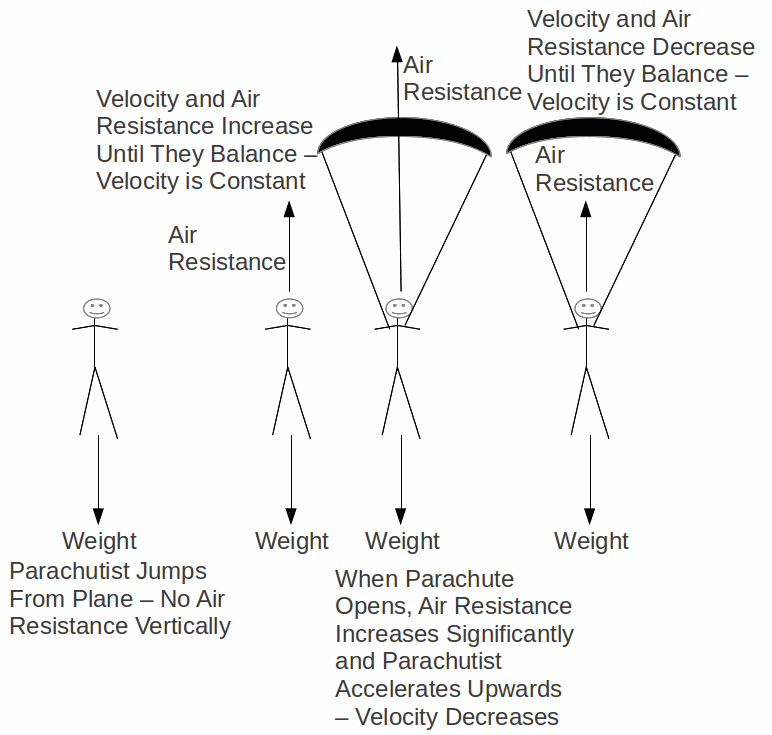When a parachutist jumps out of a plane, the only vertical force acting on them is gravity. They are initial moving at the speed of the plane, so experience air resistance, but this is a horizontal force so will not affect their vertical motion. Initially therefore, they will start to accelerate down at about 10 m/s 2 . As soon as the parachutist starts to move downwards, air resistance acting vertically will increase to slow his acceleration. Eventually a stage wil be reached where the weight of the parachutist acting down is balanced by the force of air resistance acting up. The parachutist experiences no net force, so the acceleration is zero and a terminal velocity is reached.
At some point the parachutist will open his parachute. Air resistance will increase suddenly, becoming much larger than the parachutist's weight. The parachutist will accelerate upwards. This does not mean that he will start moving upwards, only that his downwards speed will decrease sharply. Eventually the weight of the parachutist is balanced again by the force of air resistance and a terminal velocity is reached – at a much smaller velocity.

The motion of the parachutist is shown below.

